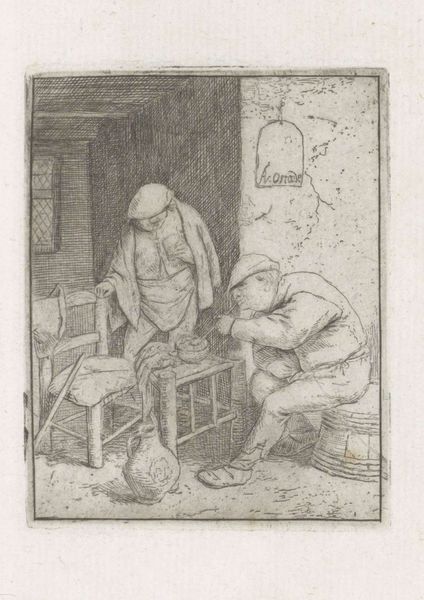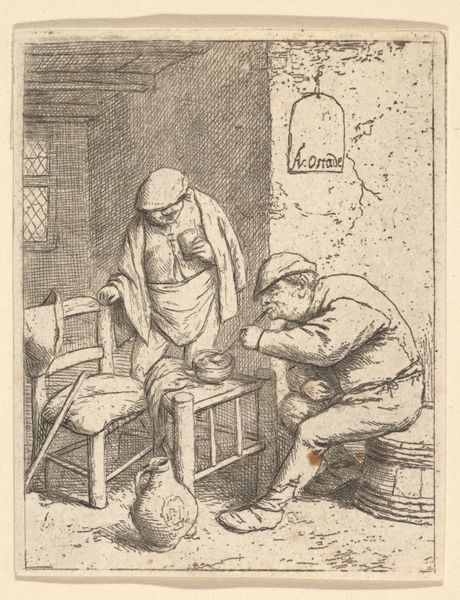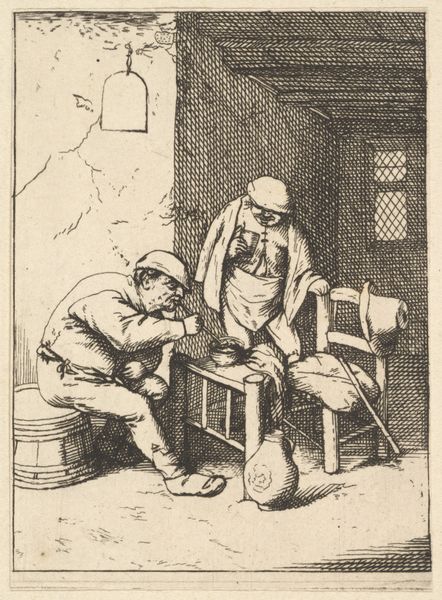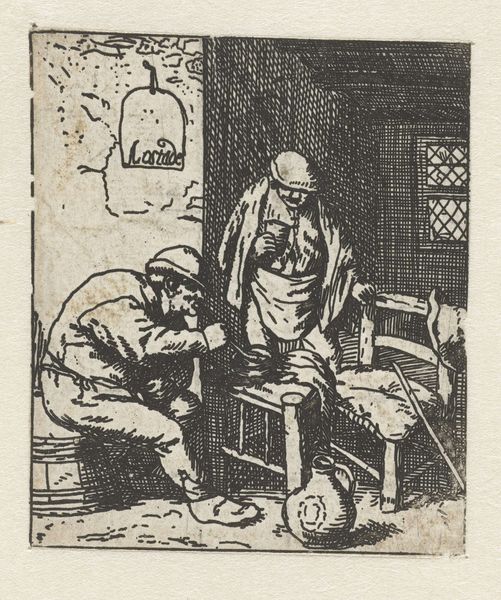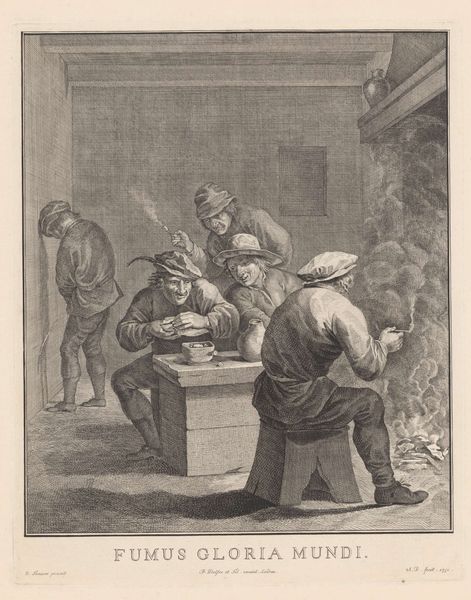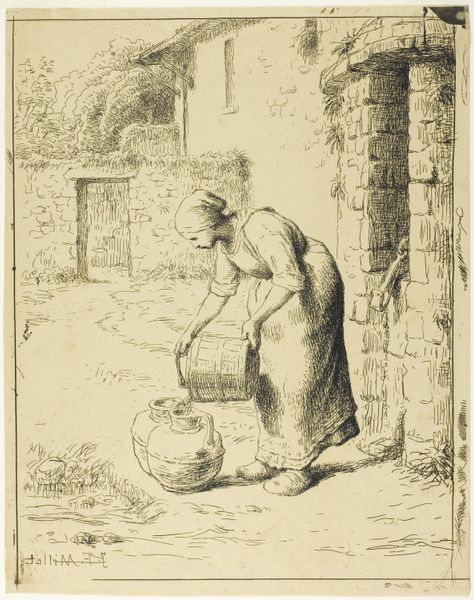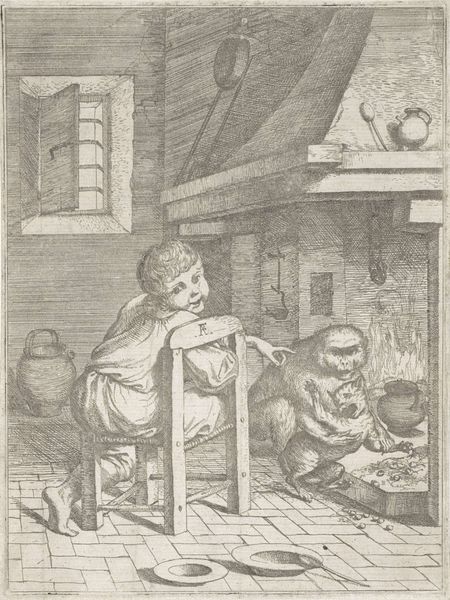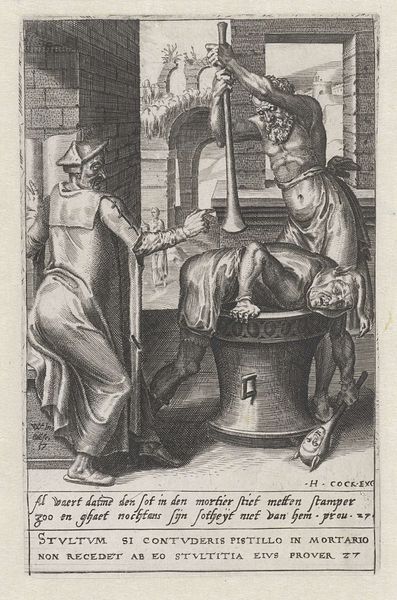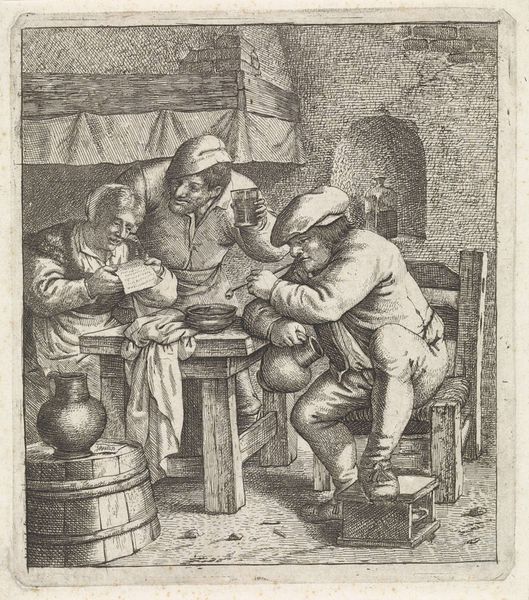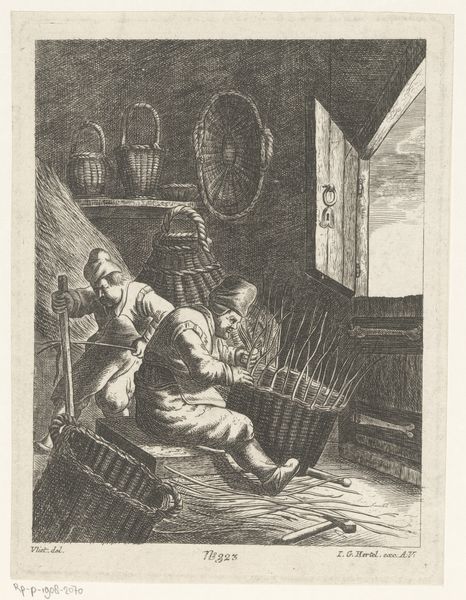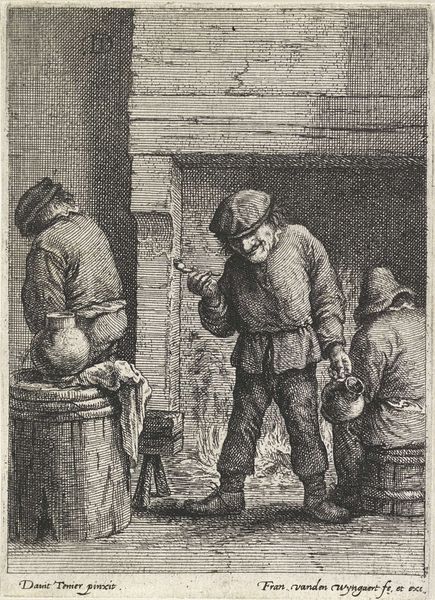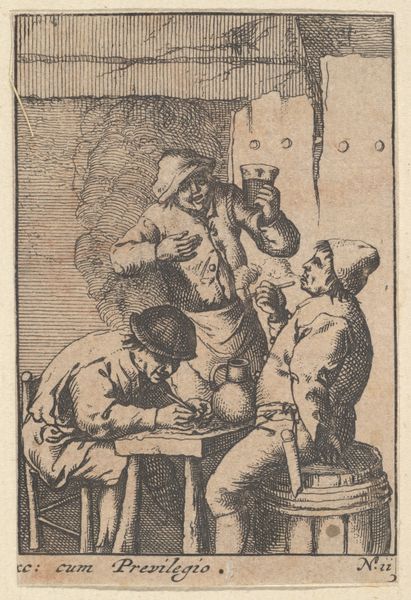
Interieur van een herberg met man die pijp aansteekt en man met glas in zijn hand 1671 - 1679
0:00
0:00
etching, engraving
#
dutch-golden-age
#
etching
#
old engraving style
#
genre-painting
#
engraving
#
monochrome
Dimensions: height 79 mm, width 62 mm
Copyright: Rijks Museum: Open Domain
Adriaen van Ostade created this etching of a tavern interior sometime in the 17th century. Scenes of everyday life like this were popular in the Dutch Golden Age, reflecting the values and concerns of a newly prosperous merchant class. But Ostade wasn’t simply documenting reality, he was making choices about what to show and how to show it. The tavern, a public space for drinking and socializing, was a key site of social life in the Netherlands, where people from different backgrounds would come together. Here, we see two men enjoying simple pleasures – drinking and smoking – in a humble setting. How does Ostade’s image engage with the social realities of its time? Is it a celebration of ordinary people, or a comment on the potential dangers of public life? Investigating the symbolism of taverns in 17th-century Dutch art, and considering the artist’s own social background can help us better understand its meanings and how art comments on the structures of its own time.
Comments
No comments
Be the first to comment and join the conversation on the ultimate creative platform.
